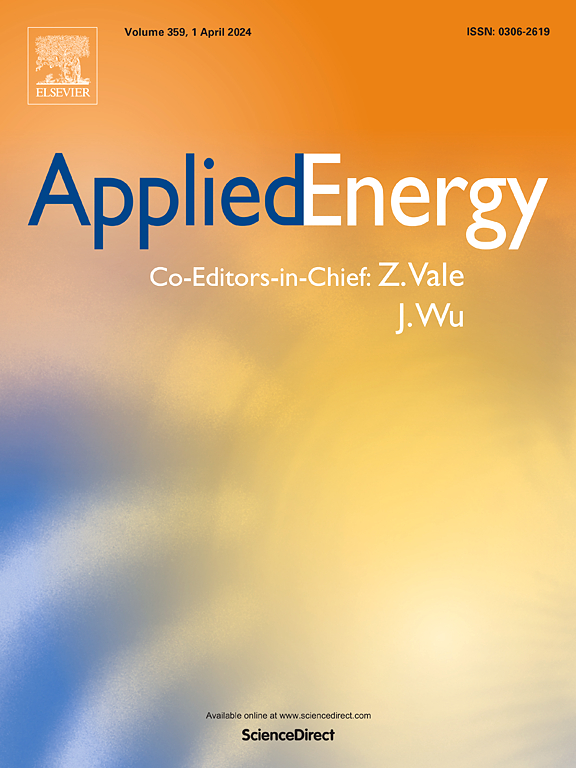Lessons learned from field demonstrations of model predictive control and reinforcement learning for residential and commercial HVAC: A review
IF 10.1
1区 工程技术
Q1 ENERGY & FUELS
引用次数: 0
Abstract
A large body of simulation research suggests that model predictive control (MPC) and reinforcement learning (RL) for heating, ventilation, and air-conditioning (HVAC) in residential and commercial buildings could reduce energy costs, pollutant emissions, and strain on power grids. Despite this potential, neither MPC nor RL has seen widespread industry adoption. Field demonstrations could accelerate MPC and RL adoption by providing real-world data that support the business case for deployment. Here we review 24 papers that document field demonstrations of MPC and RL in residential buildings and 80 in commercial buildings. After presenting demographic information – such as experiment scopes, locations, and durations – this paper analyzes experiment protocols and their influence on performance estimates. We find that 71 % of the reviewed field demonstrations use experiment protocols that may lead to unreliable performance estimates. Over the remaining 29 % that we view as reliable, the weighted-average cost savings, weighted by experiment duration, are 16 % in residential buildings and 13 % in commercial buildings. While these savings are potentially attractive, making the business case for MPC and RL also requires characterizing the costs of deployment, operation, and maintenance. Only 13 of the 104 reviewed papers report these costs or discuss related challenges. Based on these observations, we recommend directions for future field research, including: Improving experiment protocols; reporting deployment, operation, and maintenance costs; designing algorithms and instrumentation to reduce these costs; controlling HVAC equipment alongside other distributed energy resources; and pursuing emerging objectives such as peak shaving, arbitraging wholesale energy prices, and providing power grid reliability services.

从住宅和商业暖通空调模型预测控制和强化学习的现场演示中吸取的教训:综述
大量的仿真研究表明,住宅和商业建筑的供暖、通风和空调(HVAC)的模型预测控制(MPC)和强化学习(RL)可以降低能源成本、污染物排放和电网压力。尽管有这种潜力,但MPC和RL都没有得到广泛的行业采用。现场演示可以通过提供支持部署业务案例的真实数据来加速MPC和RL的采用。在这里,我们回顾了24篇关于MPC和RL在住宅建筑中的现场演示的论文和80篇关于 在商业建筑中的现场演示的论文。在介绍了人口统计信息(如实验范围、地点和持续时间)之后,本文分析了实验方案及其对性能估计的影响。我们发现71 %的审查现场演示使用实验协议,可能导致不可靠的性能估计。在剩下的29 %我们认为是可靠的,加权平均成本节约,按实验时间加权,在住宅建筑为16 %,在商业建筑为13 %。虽然这些节省可能很有吸引力,但MPC和RL的商业案例还需要确定部署、操作和维护的成本。在104篇被审查的论文中,只有13篇报告了这些成本或讨论了相关挑战。基于这些观察结果,我们提出了未来野外研究的方向,包括:改进实验方案;报告部署、操作和维护成本;设计算法和仪器来降低这些成本;控制暖通空调设备和其他分布式能源;并追求诸如调峰、批发能源价格套利和提供电网可靠性服务等新兴目标。
本文章由计算机程序翻译,如有差异,请以英文原文为准。
求助全文
约1分钟内获得全文
求助全文
来源期刊

Applied Energy
工程技术-工程:化工
CiteScore
21.20
自引率
10.70%
发文量
1830
审稿时长
41 days
期刊介绍:
Applied Energy serves as a platform for sharing innovations, research, development, and demonstrations in energy conversion, conservation, and sustainable energy systems. The journal covers topics such as optimal energy resource use, environmental pollutant mitigation, and energy process analysis. It welcomes original papers, review articles, technical notes, and letters to the editor. Authors are encouraged to submit manuscripts that bridge the gap between research, development, and implementation. The journal addresses a wide spectrum of topics, including fossil and renewable energy technologies, energy economics, and environmental impacts. Applied Energy also explores modeling and forecasting, conservation strategies, and the social and economic implications of energy policies, including climate change mitigation. It is complemented by the open-access journal Advances in Applied Energy.
 求助内容:
求助内容: 应助结果提醒方式:
应助结果提醒方式:


